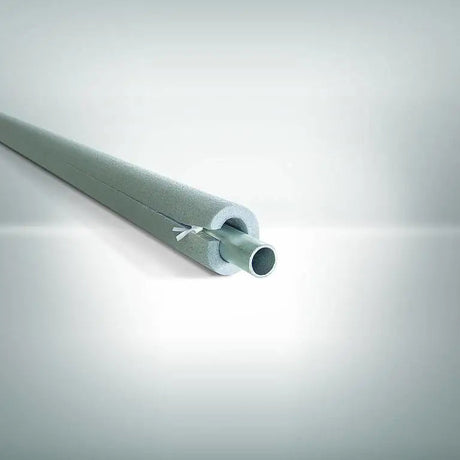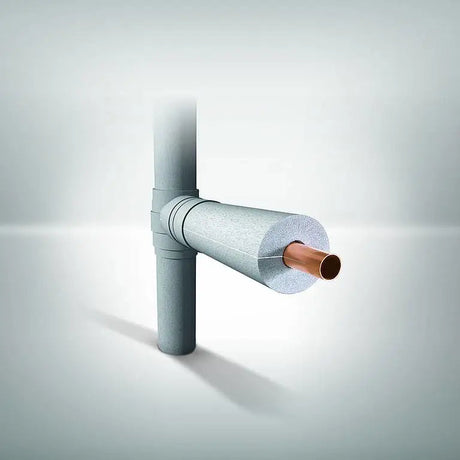Properly insulating a building is crucial for energy efficiency, cost savings, and occupant comfort. Key metrics for evaluating and selecting insulation materials include thermal performance, R-values, and U-values. This comprehensive guide explains these metrics and how to use them for optimal insulation.
Thermal Performance
Thermal performance refers to how well a material or building assembly resists heat flow. Good thermal performance means less heat is lost in winter and less heat gained in summer. Materials with low thermal conductivity have better thermal performance.
The main factors affecting an insulation material's thermal performance are:
-
Material composition - The molecular structure and density impact conductivity. Plastic foams like polyisocyanurate (PIR) have low conductivity.
-
Thickness - More thickness impedes heat flow. Doubling thickness nearly doubles resistance.
-
Installation quality - Compression, gaps, and moisture exposure reduce effectiveness. Proper installation maximizes thermal performance.
For a whole building assembly like a wall or roof, thermal performance depends on all components - insulation, framing, sheathing, etc. Optimizing insulation is key, but other factors like air gaps also matter.
Improving a building's thermal performance provides benefits:
- Reduced heating and cooling costs
- Greater occupant comfort
- Enhanced moisture and condensation resistance
- Lower carbon footprint
R-Values

The R-value is the primary metric used to measure and compare thermal performance of insulation materials.
What is R-Value?
R-value indicates an insulation's resistance to conductive heat flow. The higher the R-value, the better the thermal performance.
R-value is measured in:
Ft2×°F×h/Btu (imperial)
m2×K/W (metric)
For insulation materials, R-value per inch thickness is commonly provided. Thicker insulation has higher overall R-value.
R-value depends on:
-
Material - Plastic foams have higher R-values than fiber insulation.
-
Thickness - Doubling thickness nearly doubles R-value.
-
Density - Higher density means higher R-value.
-
Temperature - R-value varies with temperature. Values are given for standard conditions.
-
Moisture - Exposure to moisture reduces R-value.
Why R-Value Matters
Specifiers, architects, builders, and homeowners should understand R-values because:
-
It enables comparison of insulating power for different materials at various thicknesses.
-
Required insulation levels for walls, roofs, and floors are often stipulated by R-value minimums in building codes.
-
Higher R-value insulation allows thinner, less material intensive construction.
-
It provides a way to calculate the overall thermal resistance of composite building assemblies.
Typical R-Values
Typical R-values for common insulation materials:
| Material | R-value per Inch Thickness |
|---|---|
| Polyisocyanurate Foam | 8.0 |
| Extruded Polystyrene | 5.0 |
| Expanded Polystyrene | 4.0 |
| Fiberglass Batt | 3.0 - 4.0 |
| Mineral Wool Batt | 3.0 - 4.0 |
| Cellulose | 3.5 - 4.0 |
*Note plastic foams have the highest R-value per inch. Fiber insulation is lower since more solid material is present per inch.
For composite assemblies, R-values of components are added:
Example Wall
- 1/2" gypsum board - R-0.5
- 5.5" fiberglass batt - R-19
- 1/2" plywood sheathing - R-0.6
Total R-value = R-0.5 + R-19 + R-0.6 = R-20.1
Determining Required R-Value
The target overall R-value for a building assembly depends on:
-
Climate - Colder regions need higher R-values to account for harsher winters.
-
Building Type - Homes often require R-20+ walls while commercial buildings may call for R-13+.
-
Building Codes - Local codes dictate minimum R-values. Some examples:
- Roof insulation - R-38
- Wall insulation - R-20
- Floor insulation - R-30
-
Voluntary Standards - Builders may aim for higher R-values than code for efficiency and comfort. Common targets:
- Passive House: R-40+ walls
- LEED: R-30+ attic
- Energy Star: R-50 attic
Achieving higher R-values than code minimums is encouraged for enhanced performance.
U-Values

While R-value measures insulation's resistance to heat flow, U-value measures the rate of heat transfer through an assembly. Understanding U-values is also key for building insulation.
What is U-Value?
U-value is the rate of heat transfer through a building assembly per degree of temperature difference on either side.
It is measured in:
Btu/hr×ft2 ×°F (imperial)
W/m2K (metric)
The lower the U-value, the better the thermal performance.
U-value depends on:
-
Materials - Assemblies with low conductive materials like insulation have lower U-values.
-
Thickness - Thicker insulation further reduces U-values.
-
Installation - Proper installation ensures insulation achieves its full potential U-value.
-
Temperature difference - The greater the indoor-outdoor temperature difference, the faster heat flows at a given U-value.
Why U-Value Matters
U-value is useful for several reasons:
-
It quantifies the overall heat transfer through an entire assembly, not just the insulation.
-
Lower U-values reduce heating and cooling costs.
-
It accounts for the real temperature conditions a building experiences.
-
U-values are used in building energy modeling to calculate heat loss and energy use.
-
Building codes and standards set maximum U-value limits for assemblies.
Calculating U-Values
U-values can be calculated with this formula:
$$U = \frac{1}{R_{total}}$$
Where:
U = U-value (W/m2K or Btu/hr×ft2 ×°F)
Rtotal = Total thermal resistance (R-value) of the assembly
With known R-values, the U-value is easily computed.
Example Wall
- 1/2" gypsum board - R-0.5
- 5.5" fiberglass batt - R-19
- 1/2" plywood sheathing - R-0.6
Rtotal = R-0.5 + R-19 + R-0.6 = R-20.1
$$U = \frac{1}{R_{total}} = \frac{1}{20.1} = 0.05 \frac{W}{m^2K}$$
U = 0.05 W/m2K
A lower U-value indicates better thermal performance.
Typical U-Values
Typical U-values for common building assemblies:
| Assembly | Typical U-value |
|---|---|
| Wall with R-20 insulation | 0.05 W/m2K |
| Roof with R-30 insulation | 0.03 W/m2K |
| Triple Glazed Low-E Argon Filled Window | 1.0 W/m2K |
| Slab-on-Grade Floor | 0.15 W/m2K |
Walls, roofs and floors with high R-value insulation have low U-values. Windows have higher U-values.
Target U-Values
Like R-values, target U-values are set by:
-
Climate - Colder climates need lower U-values.
-
Building codes - Specify maximum U-values for assemblies. Some examples:
- Walls: 0.35 W/m2K
- Roofs: 0.20 W/m2K
- Floors: 0.25 W/m2K
-
Rating systems - Set stricter U-value limits for efficiency. For example:
- Passive House: 0.15 W/m2K walls
- LEED: 0.026 W/m2K roof
When selecting insulation materials and designing building envelopes, specify products that achieve U-values below code maximums. Super insulated assemblies can reach U-values under 0.10 W/m2K.
Putting it All Together

We've covered the key metrics used to evaluate insulation and building thermal performance:
Thermal Resistance
- R-value - High is better. Indicates resistance to conductive heat flow.
Thermal Transmittance
- U-value - Low is better. Represents rate of heat transfer through full assembly.
With this knowledge, you can now:
-
Compare insulation materials' thermal properties using R-value.
-
Select appropriate insulation R-values to meet or exceed code requirements.
-
Compute the U-value for full assemblies with known R-values.
-
Design and build envelopes that achieve low U-values for efficiency.
Proper selection of insulation and targeting high R-values and low U-values will lead to optimized building thermal performance, comfort, and energy savings.
Key Takeaways
-
Thermal performance describes how well insulation resists heat flow. It depends on material, thickness, and installation quality.
-
R-value measures insulation's resistance to heat. Higher is better. It enables comparison between products.
-
U-value evaluates the heat transfer rate through full assemblies. Lower is better. It accounts for all materials and temperatures.
-
Use R-value to select insulation. Check against code minimums.
-
Calculate U-value from R-values. Target U-values below code maximums.
-
Well insulated buildings have R-20+ walls, R-30+ roofs, and U-values under 0.05 W/m2K.
Properly understanding and applying these metrics will lead to superior insulation selection and building thermal performance.
Frequently Asked Questions about R Values
1. What are the most common insulation materials?
The most common insulation materials are fiberglass, mineral wool, cellulose, polyurethane foam, polystyrene foam, and polyisocyanurate foam. Each has different R-values.
2. Does insulation lose R-value over time?
All insulation products experience some loss of R-value as they age. The reduction is gradual and depends on the material. Well-installed foam insulations experience minimal R-value loss.
3. How does moisture impact insulation?
Exposure to moisture can reduce insulation's R-value. It's important to protect insulation from water intrusion and allow drying if it gets wet. Some types resist moisture better than others.
4. What about radiant barriers and reflective insulation?
Radiant barriers and reflective insulation work by reducing radiative heat transfer. They are useful in some climates but have no rated R-value for resisting conductive heat flow.
5. How do I find R-values for insulation products?
Manufacturers provide R-value per inch thickness for their products. Also check certification directories like the DOE's Qualified Products Database for rated R-values.
6. What does insulation cost per R-value mean?
Insulation cost per R-value helps compare products. It looks at cost per unit R-value (e.g. £ per ft2-°F-hr/Btu). Higher R-value insulation has lower cost per R-value.
7. Do different wall assemblies need different R-values?
Yes, the framing type impacts total R-value needed. Insulated stud walls require R-20+ insulation. Insulated concrete forms (ICF) only need R-10+ due to less thermal bridging.
8. How much do windows impact U-value?
Windows have much higher U-values than insulated walls and roofs. Minimizing window area is key, along with selecting high performance window frames and glazings.
9. What are typical building U-values by construction type?
Mass masonry buildings: 0.3 W/m2K. Wood frame with R-20 walls: 0.2 W/m2K. Passive house: 0.1 W/m2K. Super-insulated: <0.05 W/m2K.
10. Do different climate zones need different R-values?
Yes, colder climates generally need higher insulation R-values to account for harsher winters. Some codes specify R-value maps by climate zone.
11. What are common ways heat is lost in buildings?
Air leakage, conduction through envelope, ventilation losses, radiation losses through windows, and via thermal bridges like studs. Insulation aims to minimize conduction and radiation losses.
12. How much insulation is needed for new construction vs. retrofits?
New construction can accommodate thicker insulation for higher R-values. Retrofits are often limited to cavity insulation or exterior additions with lower R-values.
13. How long does it take for insulation to pay for itself?
The payback period depends on insulation cost and energy savings. Well-insulated attics often pay back in less than 5 years. Walls can take 15+ years to pay back the investment.
14. Should I upgrade my attic insulation?
If your attic has R-30 or less insulation, upgrading to R-40+ can provide significant heating and cooling savings. An insulation contractor can advise.
15. What are signs I need more insulation?
Frequent drafts, rooms that are hard to keep comfortable, high utility bills, visible gaps in insulation, and outdated insulation levels per code. An energy audit can assess needs.
























































